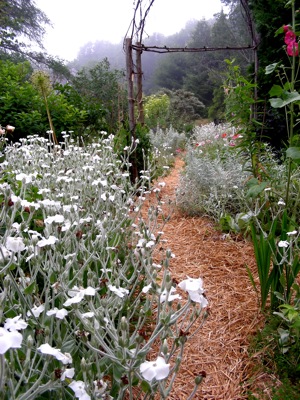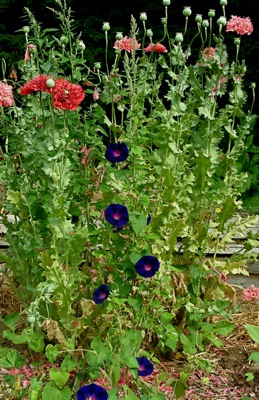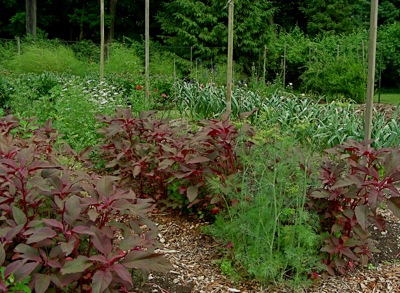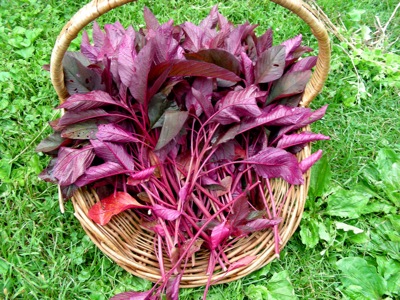Fall Planting, Part 1: Free and Easy
The impending sweep of storms is likely to fix it, but for right now the Maine garden is still way too dry to start moving shrubbery around. And let us not speak of the bulb order, which as usual (sigh) isn’t done yet. But none of this means next year is being neglected; the easiest fall planting of all is happening right now, all over the garden.
Flowering plants make seeds; it’s more or less their mission in life, so this is the season when negligence rules. No more deadheading! The birds are grateful right away, as anyone knows who’s watched their cosmos bending under the weight of goldfinches. And I’m (almost) always grateful in spring, when there’s a nursery’s worth of volunteers to play with

This border of Lychnis coronaria 'Alba' comes back every year, but it was unusually lush this summer because of the drought (hates wet feet).
The peony is Florence Nichols, the background of lychnis buds is the kind of happy accident you get when you let loose the self-sowers.
Sometimes it’s fine to just leave them alone: the poppies and morning glory came up in an unused bit of the holding bed. Because it remained unused the volunteers stayed put, and plopping a tuteur over the yellowing poppies solved the “plants way ugly before seeds are ripe” problem. Morning glories, fortunately, make seeds without turning tatty.
(Please note I don’t usually have antique tuteurs lying around for in case. This one was only available because its pet clematis got wilt and had to be cut to the ground.)
But sometimes you do have to be ruthless. Giant purple amaranth has been coming back for years, and sometimes it does something wonderful
(You’re seeing this setup through the fence because that’s the only way to see it.)
but before you see a few chosen giants you see this
so you have to do this
Tender young amaranth is delicious. Cook it the way you would lambs quarter.
Plants I have found to be willing self-sowers, given the right conditions:
Annuals: Standing cypress, alyssum, amaranth, borage, poppies, larkspur, nicotiana, coriander, bupleurum, honeywort, calendula, morning glory, cosmos, talinum (jewels of Opar), striped mallow
Biennials: Foxglove, hollyhock, parsley, lychnis,
Perennials – these are often too much of a good thing, like lady’s mantle, or too much of a not-good thing, like phlox paniculata, which always reverts to a rather blah pink, but heaven knows they’re willing: columbine, herbaceous peony – if you have a lot of them and open ground for them to seed into, thistles, asters, crambe, echinacea, rudbeckia, sedum…
to be continued as we all think of more





















You have a truly awesome garden, it’s very inspirational to a novice!
Welcome, Ton
and thanks. Please come back soon — and let us know how YOUR garden is doing.